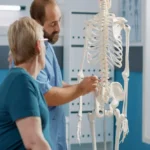Chronic pain affects millions of people worldwide, often diminishing their quality of life and mental well-being. Traditionally, opioids have been a primary tool in managing chronic pain. However, the opioid epidemic and growing awareness of their side effects have pushed the medical community to look for safer, more effective solutions. Today, many modern Pain Treatment Center offer cutting-edge, non-opioid therapies that address both the physical and psychological aspects of chronic pain. Here’s a closer look at how innovative treatments are changing the game for pain management.
Understanding Chronic Pain
Chronic pain is defined as pain that lasts longer than three to six months, beyond the expected period of healing. It can be caused by injuries, surgeries, nerve damage, arthritis, fibromyalgia, or even unknown factors. Unlike acute pain, which serves as a warning signal, chronic pain often persists without any ongoing injury, making it particularly complex to treat.
Pain is not just a physical sensation—it impacts mental health, sleep, mood, and daily activities. Because of its multifaceted nature, chronic pain requires an equally comprehensive and individualized treatment plan.
The Shift Away from Opioids
Opioids were once the gold standard for chronic pain relief. They are powerful medications that work by altering the brain’s perception of pain. While they can be effective in the short term, long-term use often leads to tolerance, dependency, and a risk of addiction. The alarming rise in opioid-related deaths has compelled healthcare providers to reconsider their use, especially for long-term pain management.
As a result, Pain Treatment Centers are now emphasizing multi-modal pain management strategies that focus on the root cause of pain rather than simply masking the symptoms.
Innovative Treatment Options in Modern Pain Centers
Here are some of the most promising and widely used non-opioid treatments currently offered at leading Pain Treatment Centers:
1. Interventional Pain Procedures
Minimally invasive techniques like nerve blocks, epidural steroid injections, and radiofrequency ablation can provide significant relief by targeting the source of pain directly. These procedures can help patients reduce or eliminate their reliance on medication.
2. Regenerative Medicine
Regenerative therapies such as Platelet-Rich Plasma (PRP) and stem cell injections use the body’s natural healing processes to repair damaged tissues. These treatments are particularly useful for joint pain, tendon injuries, and degenerative conditions like osteoarthritis.
3. Neuromodulation
Spinal cord stimulators and peripheral nerve stimulators deliver electrical impulses to the nervous system to disrupt pain signals. These implantable devices are used for patients with nerve-related pain who haven’t found relief through other methods.
4. Cognitive Behavioral Therapy (CBT)
Pain has a psychological dimension, and CBT addresses the mental and emotional responses to pain. By changing how a patient thinks about their pain, CBT can improve coping mechanisms and reduce perceived intensity.
5. Physical Therapy and Exercise
Customized exercise programs help strengthen muscles, improve mobility, and reduce inflammation. Physical therapy is a cornerstone of chronic pain treatment and often complements other medical or interventional approaches.
6. Acupuncture and Alternative Therapies
Practices like acupuncture, chiropractic care, massage therapy, and biofeedback are increasingly offered at integrated Pain Treatment Centers. These therapies focus on improving overall body balance and wellness, often providing relief with minimal side effects.
Technology and Telemedicine
Telemedicine has become a vital part of pain management, especially for follow-up care and therapy sessions. Virtual consultations make it easier for patients with mobility issues to access specialists without traveling. Some centers also use wearable technology and mobile apps to monitor pain levels, medication use, and activity in real time—empowering patients to take control of their condition.
Personalized Pain Management Plans
One-size-fits-all no longer applies in chronic pain care. At today’s advanced Pain Treatment Centers, individualized treatment plans are created based on a patient’s specific diagnosis, medical history, and lifestyle. By combining multiple treatment methods—physical, emotional, and medical—patients are more likely to experience long-term relief without the risks of opioid dependency.
Conclusion
Chronic pain is a complex condition, but modern medicine offers a wide range of effective, opioid-free solutions. Whether through cutting-edge procedures, regenerative therapies, or holistic care, today’s Pain Treatment Centers are leading the way in transforming how we understand and treat long-term pain. If you or a loved one is struggling with chronic pain, consider consulting a multidisciplinary pain clinic that offers these innovative, life-changing alternatives.


